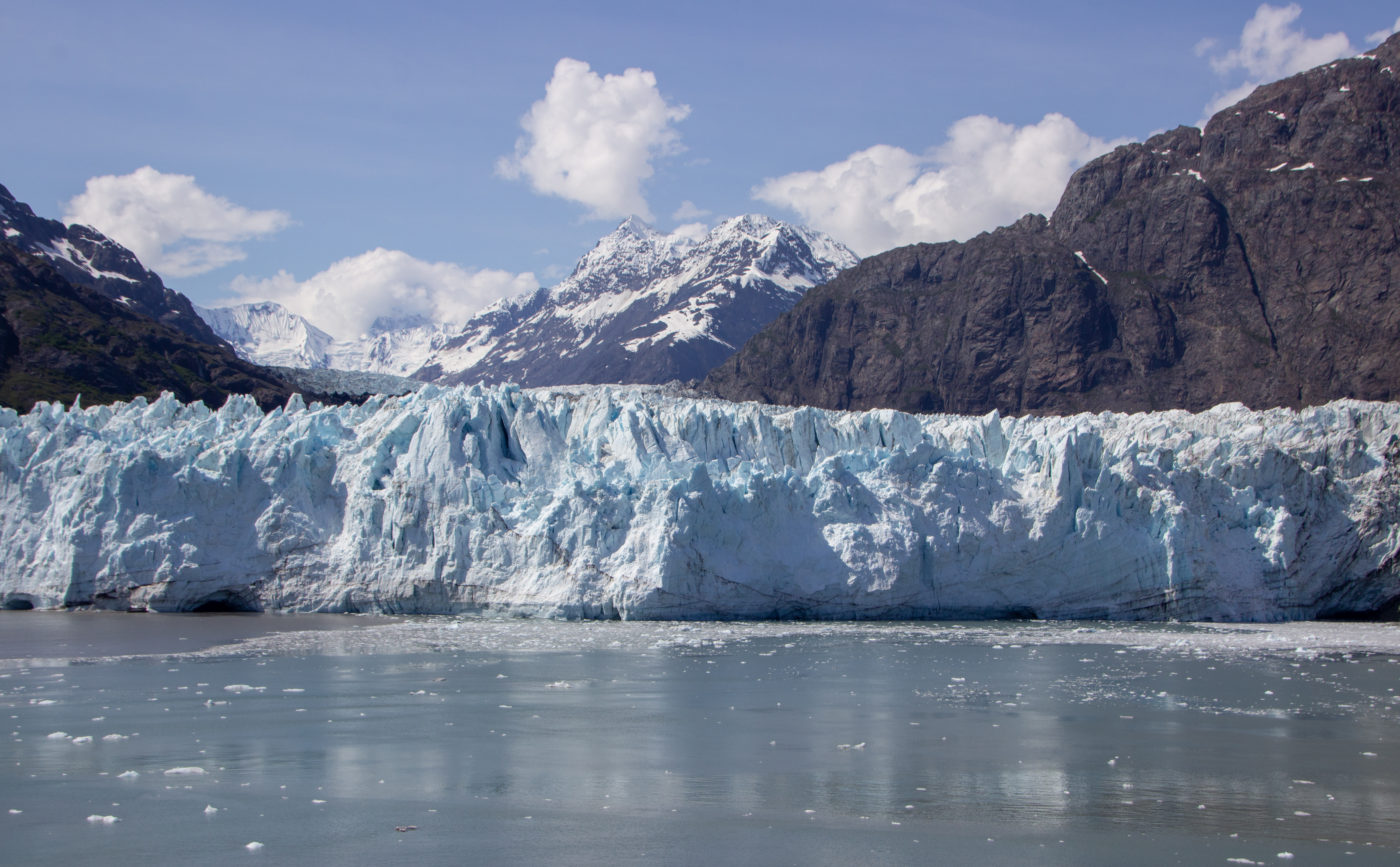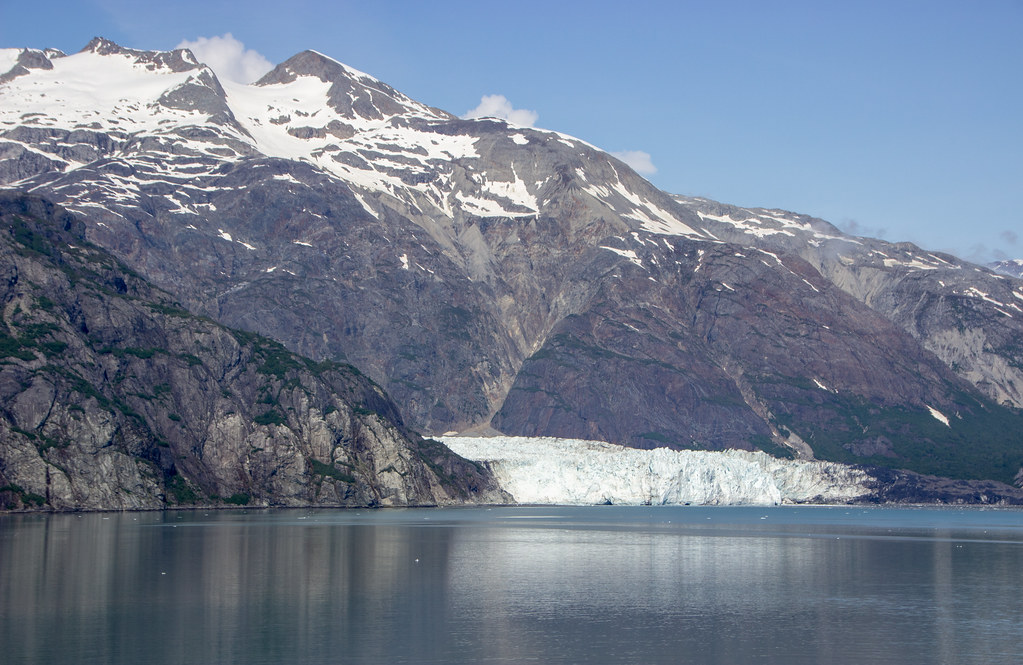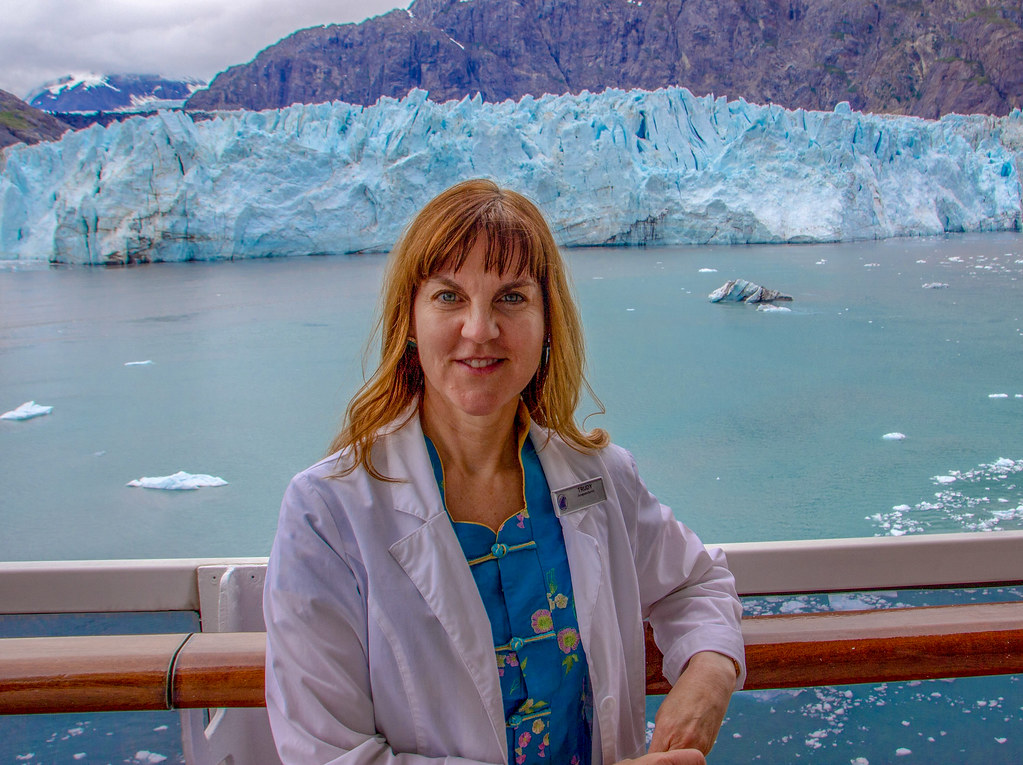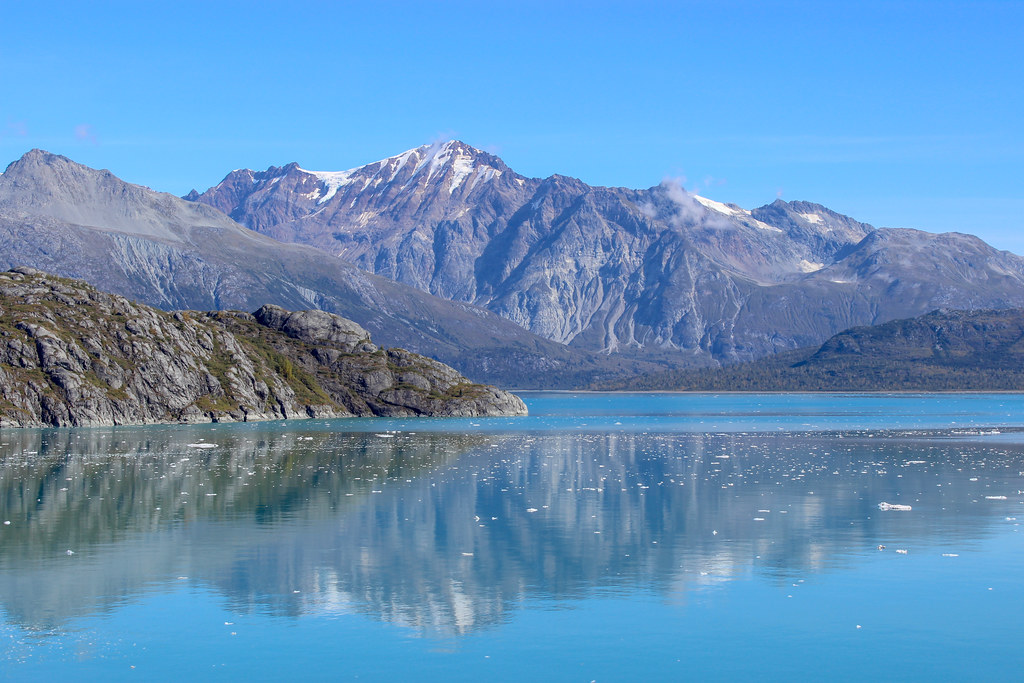Cruising the pristine waters of Glacier Bay allows you to see the crowning jewel of the SE Alaskan Inside Passage. The stunning Glacier Bay National Park & Reserve lives up to its name with 50+ named glaciers. Also, this remote paradise is only accessible by air or sea, with no roads to its grandeur. As an Acupuncturist-at-Sea, I cruised here numerous times. So, read on to learn about what highlights to expect when taking a Glacier Bay Alaska Cruise.
A Glacier Bay Alaska cruise is truly one of the most humbling experiences. Here, the power of nature is larger than life, displaying the splendor and wildness of Mother Earth at her grandest. Everywhere you look is a site to beholden, with soaring and glaciated, snow-capped mountains, deep fiords, tidewater glaciers, icebergs and marine wildlife. This is all while on a journey through crystal clear turquoise waters…
Here all of life’s problems dissolve into the infinite wildness of the moment. Just being here and immersing the 5 senses is a healing journey…
Glacier Bay Alaska Cruise
Over 50 Tidewater and Terrestrial Glaciers
Glacier Bay basin splits into the eastern and western arms. Most cruises navigate the Western Arm, with the most dramatic tidewater glaciers. While cruising Glacier Bay, the 50+ glaciers (tidewater and landlocked) are all around you. Think of glaciers as slow moving rivers of ice. The 7 tidewater glaciers dramatically terminate along the shores as a snout hundreds of feet high with stunning blue ice.
Glacier Bay’s tidewater glaciers are renowned for being some of the most impressive in the world. Seven of these glaciers are reported to be active tidewater glaciers, displaying the calving phenomenon. Calving is when glaciers dramatically break off into icebergs plunging into the sea with thundering noise raising large waves.
Two Most Stunning Tidewater Glaciers:
Margerie and Johns Hopkins
The 2 most stunning tidewater glaciers that my cruises observed relatively nearby are the Margerie and Johns Hopkins Glaciers. The Margerie Glacier is a 21 miles (34 km) long tidewater glacier, beginning on the south slope in the Fairweather Mountain Range (highest in park rising to 4671 m (15,325 ft).
Located at the deep end of the Glacier Bay, Margerie Glacier extends over a width of about 1 mile (1.6 km). Furthermore, this dramatic glacier is one of the few glaciers advancing in the park, 12-14 feet/day and calves frequently. Margerie Glacier is a relatively clean glacier with less debris, showcasing its exquisite bright blue color.
The Johns Hopkins Inlet is a stunning 9-mile (14 km) long fjord, displaying several tide water glaciers. This journey takes you to the Johns Hopkins Glacier, one of Alaska’s most picturesque glaciers. It’s 12 miles long and has been confirmed to be one of few glaciers that is still advancing rather than shrinking.
Why is glacier ice blue? Because the red (long wavelengths) is absorbed by ice and the blue (short wavelengths) light is transmitted and scattered. The longer the light path travels in ice, the more blue it appears.
Snow-capped Mountains as a Backdrop
While cruising through the fiords at Glacier Bay, the glaciated, snow-capped mountains humbly surround you. From the tidewaters, the mountains rise 3 miles high. Something unique to witnessing Alaskan glaciated mountains that I experience, is the feeling of being immersed in a surreal painting. Even my photos reveal mountain images in swirling earth colors that look more like a painting than a mere photo. Here, I’m intimately reminded that nature is an artist revealing what is most beautiful on Earth.
Furthermore, the Fairweather range in Glacier Bay is the highest in SE Alaska. As a backdrop behind the stunning Margerie Glacier, Mount Fairweather rises to 4671 m (15,325 ft) alongside Mt. Mount Quincy Adams 4,150 m (13,615 ft). Thus, these mountains create a rainshadow effect for the West Arm, so this area receives less rainfall.
Glacier Bay Alaska Cruise – The Wildlife
Additionally, there’s the wildlife of Glacier Bay and always there to catch you by surprise. Its guaranteed to see abundant marine wildlife, such as, humpback whales, orcas, sea otters, seals or dolphins.
Related: Seeing the Awesome Humpback Whales of Alaska’s Inside Passage
The humpback whales come to this sanctuary mostly to feed in the summer months. I observed them mostly at the entrance of the basin. The marine mammals, such as the humpbacks and sea lions avoid the West Arm, because of the lower salinity and silty waters near the tidewater glaciers. The seals are often seen on top of icebergs throughout the bay, especially close to the tidewater glaciers, because their predators like orcas avoid this area.
It’s good to bring binoculars for rare land sightings of brown and black bears, mountain goats, wolves or moose. I witnessed many bald eagles resting on top of icebergs. In addition, spectators may see tufted puffins, black leg kittiwakes, and the endangered Kitzlits and Marbled Murrelets.
Related: 20 Wildlife Photos that Will Inspire You to Visit Amazing Alaska
Why are the Glacier Bay waters turquoise?
As if the beautiful blue glaciers, majestic mountains and wildlife isn’t enough. Also, there’s the pristine turquoise waters. This unique and stunning color is caused from the fine silt and clay particles that float in the waters.
Suspending and sinking slowly, when sunlight hits these waters, these particles absorb the shortest wavelengths (purples and indigos) and the water absorbs the longer wavelengths (reds, oranges, yellows). In the end, this leaves mainly blues and greens to get reflected back to our eyes.
Lastly and most importantly, I want to mention, Glaciers are the “Canary of the Coal Mine” for Climate Change and Glacier Bay Basin sadly displays this.
What Does This Mean for Alaska’s Glaciers?
The Glacier N.P. website has this to say about climate change. “Of the more than 100,000 glaciers in the state, 95% are currently thinning, stagnating, or retreating, and most of Glacier Bay’s glaciers follow this trend. However, there are a few exceptions. Due to heavy snowfall in the soaring Fairweather Mountains, Glacier Bay remains home to a few healthy and advancing glaciers, a rarity in today’s world.”
Glacier Bay remains a unique ecosystem from which to research and observe nature in its truest and most inherent form. Furthermore, it’s the spiritual homeland of the Huna Tlingit Native Americans, and we can thank John Muir, researchers and rangers, who interpret the wild beauty for us to understand this awesome reserve. Truly, this bountiful sanctuary is a looming reminder to tread lightly on the land and waters of our precious planet.
Read Next!
Top 10 Things to Do in Spectacular Juneau, Alaska
Pristine Sitka, Alaska’s Top 10 Attractions









